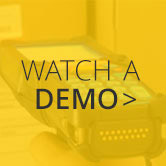In this article, we take a look at the basic steps in the SAP Business One Purchasing Process and how to streamline them for optimal efficiency. If your company deals with several external vendors, visibility into your full procurement processes is crucial. However, there are times when you need goods and materials right away, and your standard purchasing processes are too sluggish. In these unique cases, you often find yourself placing a rush order by phone while scribbling a note about it on your desk for accounts receivable.
While this might work for pencils and paper clips, chasing your vendors down by telephone to expedite your essential materials is hardly a reliable approach, especially as your customers are counting on you when your vendors may not be. Instead, you need a system that ensures a steady stream of products and goods are continually arriving at your facility in sound condition and on time.
SAP Business One is a fully integrated end-to-end business software solution that simplifies the purchasing process, from the time purchasing documents are generated to when the purchase order (PO) is created. The SAP Business One purchasing module automates your purchase information at every stage. This allows you to know precisely what inventory you have in stock. It provides businesses with a real-time financial overview of your business so you understand how much expendable capital you have available.
This kind of continuous visibility into your supply chain helps you avoid critically low and out-of-stock events. At the same time, detailed and accurate historical data provided by SAP Business One lets you better manage your vendors and calculate sound inventory projections to determine which items you need to buy in the future.
The SAP B1 Purchasing Process Overview
The SAP Business One Purchasing Process flow is as follows:
1. Create the SAP Purchase Order – this is a document that you supply to your vendors indicating which goods or services you wish to purchase, including quantities and any pricing arrangements you have set in place.
2. Generate the Goods Receipt PO – A Good Receipt PO is always generated whenever any goods are received against a purchase order created in the SAP Business One system.
3. Accounts Payable (A/P voucher) – This document logs the vendors’ invoice information to trigger the outgoing payment to your vendors for the goods or services received.
4. Outgoing Payment – When it is time to pay your vendor, an outgoing payment document generates to start this process. Vendors can be paid in multiple ways. The most typical are:
- Cash
- Credit Cards
- Check
- Wire Transfer
- ACH Bank Draft
If the payment is international, there are specific procedures to follow depending on the region. If a vendor is based in Europe, for instance, you would use the Swift payment transfer system. Payment processing functions and reporting features are discoverable in SAP Business One’s banking module.
Master Data for purchasing
To complete a purchase order in SAP Business One, you need access to a few essential pieces of master data, the first of which belongs to your vendor. One of three types of Business Partner master data contained in SAP Business One, this vendor information indicates who is providing you the goods and services. Vendor master data is used in every purchase order, irrespective of whether it is a manual or automatic financial procurement transaction.
What details does the vendor master data provide? Vendor master information gives your quick access to your vendors’ person of contact, their company addresses, preferred payment methods, and other important accounting information. SAP Business One lets you conduct searches for vendors and their corresponding purchase documents. Authorized users can input new vendor information at the time they create a purchase order.
Whenever you initiate a purchasing document, it is worth noting that item data is contained within the master data itself. This key information lets you quickly access items in the system that are most commonly purchased, inventoried, and sold so you can later migrate the recorded data into any document held in other core SAP Business One modules like sales, production, inventory, and service. The General Tab of the Item Master Data Window tells you everything about the manufacturer, its shipping, purchase methods, and more.
SAP Business One Purchasing Management and Accounting
Any time you create a purchase order for SAP Business One, there won’t be any postings to inventory or accounting. This first post generates after the goods receipt PO (GRPO) is entered into the system. At this stage, the GRPO automatically produces a journal entry that supplies valuable details to your accounting team, like the value of the goods received to both the debit side of your inventory account and the credit side of your allocation cost account.
Once the account payable invoice posts, the goods receipt PO closes. A/P invoice then generates another journal entry, posting the invoiced amount to your debited allocation costs account and to the credited side of the vendor account. This clears the balance in your allocation cost account from the goods receipt PO, and the system logs the amount you paid the vendor for streamlined tracking and recording.
Are you considering integrating SAP Business One with your external systems?
We help companies integrate SAP Business One solutions with their existing external system through numerous tools that enable SAP Business One integrations with e-commerce platforms and more.
Contact us today for more information on how to integrate SAP Business One with your company. Our team can move all your existing purchasing information into SAP Business One so you can optimize its procurement management solutions.



